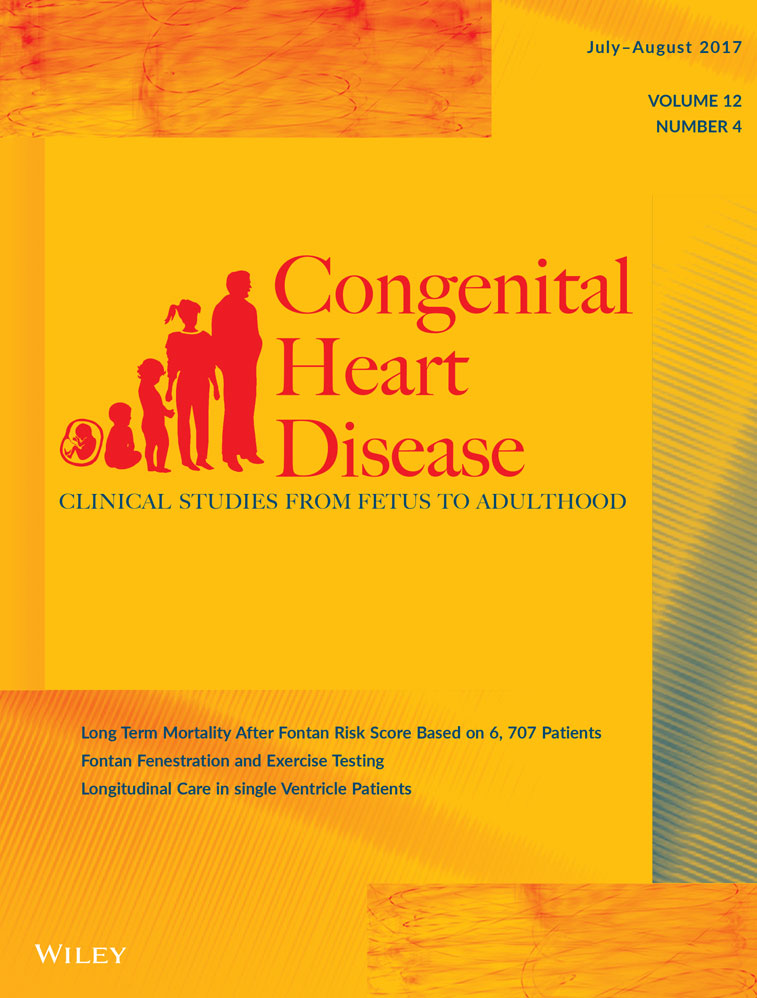Forced vital capacity predicts morbidity and mortality in adults with repaired tetralogy of Fallot
Abstract
Objective
Abnormal lung function characterized by a reduced forced vital capacity (FVC) is common in adults with repaired tetralogy of Fallot (TOF) and is associated with previous thoracotomies and sternotomies. The impact of abnormal lung function on clinical outcomes in adult patients with repaired TOF is unclear. The aim of this study was to determine the impact of abnormal lung function on the outcome of hospitalization and death in adults with repaired TOF when analyzed with other traditional cardiac risk factors.
Design
Retrospective study of adults with repaired TOF, who underwent spirometry between 2000 and 2014. FVC < 60% of predicted was categorized as moderate-to-severely reduced lung function. Primary outcome measure was the combined clinical endpoint of death, cardiac transplantation, or nonelective hospitalization for primary cardiac or respiratory indication.
Results
A total of 122 patients were included. Average age at spirometry testing was 31 ± 10.1 years. FVC was < 60% predicted in 23 (19%) patients. During a mean follow-up period of 3.97 ± 2.65 years, 23 (19%) patients reached the combined clinical outcome of nonelective hospitalization and/or death. FVC < 60% predicted was independently associated with the risk for the combined clinical outcome (RR 6.68 (95% CI 2.49–17.94), P < .001).
Conclusions
Abnormal pulmonary function characterized by reduced FVC is common in adults with repaired TOF. Patients with FVC < 60% predicted had a 6 times higher rate of hospitalization and/or death compared to those with FVC ≥ 60%.




